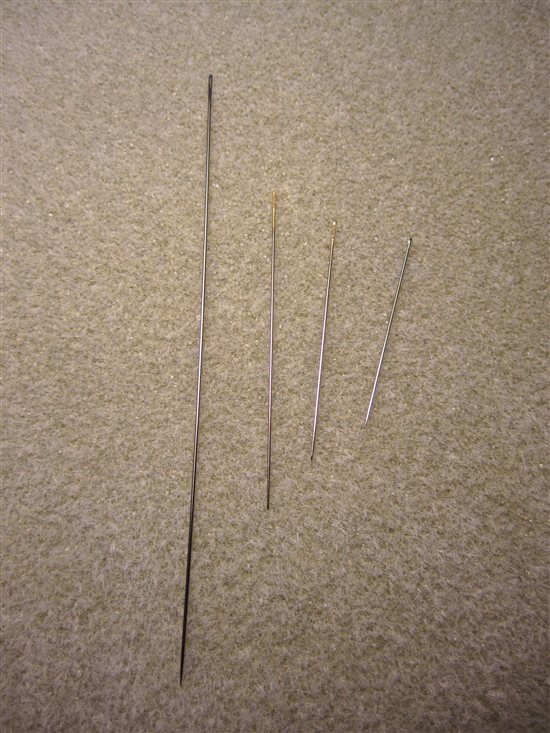Stitch Pro: Which Beading Needle Should I Use?
"Which beading needle should I use?"
This is a common question from beginning beaders, but it's one that advanced beaders consider all the time, too. The answer? Choose a needle that's appropriate for not only your bead-hole size, but also for the technique you're using, and (almost more importantly) how comfortable the needle feels in your fingers. Here are a few points to think about:
Bead size
The most common beading needle sizes are 10, 11, and 12, moving from thickest to thinnest. When you first see these needles sitting next to one another, you can't really believe they are different sizes, but when you start working with them, their differences are very clear. For instance, a size 12 beading needle passes through size 15 seed beads much easier than a size 10 does, so if you're using tiny beads, use a thinner needle. When in doubt, I start my projects with a size 11 and then adjust accordingly.
At left is a size 11 sharp needle, on the right is a size 12 sharp needle
Technique
There are different lengths of beading needles, and, although perhaps imperceptible to the eye, just as many different shapes. For instance, an English beading needle is long and thin with a thin, long hole and a bead embroidery sharp needle is super sharp (thus the name) and has a more sturdy profile with a short, wide hole. As a rule of thumb, if the technique you're using requires a straight pass through the beads, like flat peyote stitch, use a long needle like an English beading needle. If you're doing a lot of weaving around and digging into beads, as you might do with sculptural beading or embroidery techniques, use a short needle like a sharp, short, or straw needle.
From left to right: Loomwork needle, long (English) beading needle, short beading needle, bead embroidery sharp
Preference
That last paragraph I wrote about matching needle types to techniques sounds nice in theory, but I've found that most beaders (including me) find a needle type they like and use that type for all the projects they do. Some people like to have a long needle to hold onto–it just feels better in their hands. I've always liked to use sharp needles, not only because I do a lot of sculptural work and like to be able to maneuver easily between beads, but because their stocky bodies don't bend and snap in my over-tight grip. That is, until I met Tulip needles! This brand of beading needle is a little more expensive than other brands, but after working with their long beading needle for the first time recently, I may be changing my favorite style. I got to try these while teaching at a week-long beading retreat and used the same Tulip needle for the whole week–that's a record for me! I liked not having to worry about whether my needle would break, and so enjoyed getting used to using a little longer needle. The point here, then, is to experiment with all types and brands of needles to find your favorite.
What is your favorite type, size, and brand of beading needle and why? Share your beading-needle experience with the rest of our readers right here on Inside Beadwork Magazine.
Happy beading!
Jean Campbell
Senior editor, Beadwork magazine












Join the Conversation!